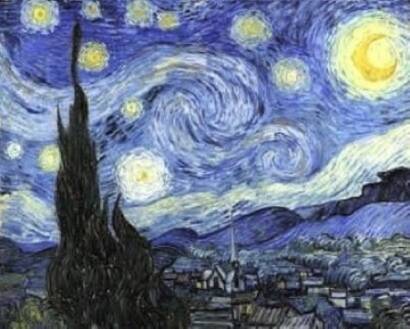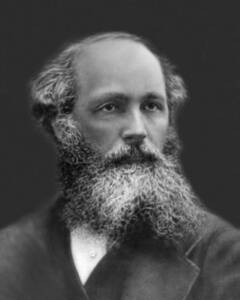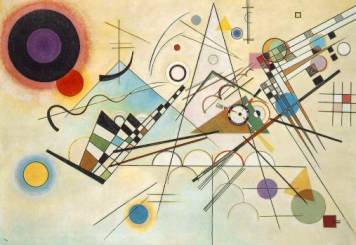The word ekphrasis originates from the Greek meaning ‘to describe in full’. This applies also to the process of describing a work of art, known as ekphrastic poetry.
In ekphrastic poetry, the writer gives a detailed description of the art, conveying emotional, sensory and intellectual connection with the art. There are no restrictions to the structure of the poem; its crafting is a description of the theme of the artwork based on the author’s connection to the art.
Since Antiquity, we see examples of ekphrasis in literature. In Homer’s Iliad, Achilles’ description of Hephaestus’ shield is filled with vivid Imagery of scenes of war and peace, evoking feelings and emotions.
Traditional Ekphrastic Poetry
The ekphrastic poem is inspired by a work of art. The expression of feelings and creative writing is based on the author’s appreciation of the art. The poem goes beyond what is visible and explores a personal deeper meaning and connection with what is portrayed in the art. The writer creates, invents, theorizes
about one or many possible stories depicted in the art.
The Starry Night
The town does not exist except where one black-haired tree slips up like a drowned woman into the hot sky. The town is silent. The night boils with eleven stars. Oh starry starry night! This is how I want to die.
It moves. They are all alive. Even the moon bulges in its orange irons to push children, like a god, from its eye. The old unseen serpent swallows up the stars.
Oh starry starry night! This is how I want to die:
into that rushing beast of the night, sucked up by that great dragon, to split
from my life with no flag, no belly, no cry.
—By Anne Sexton

Descriptive Scientific Ekphrastic Poetry
The poem describes scientific laws, mathematical theorems, and brings to life myriad poetic descriptions of natural phenomena. This has been practiced for millenia by expert scientists and innovators, seeking to share their knowledge in a way that is more attractive to people, while enjoying the fulfilling experience of poetry-writing.
A Problem in Dynamics
An inextensible heavy chain
Lies on a smooth horizontal plane,
An impulsive force is applied at A,
Required the initial motion of K.
Let ds be the infinitesimal link,
Of which for the present we’ve only to think;
Let T be the tension, and T + dT
The same for the end that is nearest to B.
Let a be put, by a common convention,
For the angle at M ‘twixt OX and the tension;
Let Vt and Vn be ds‘s velocities,
Of which Vt along and Vn across it is;
Then Vn/Vt the tangent will equal
Of the angle of starting worked out in the sequel.
…
Thus managing cause and effect to discriminate,
The student must fruitlessly try to eliminate,
And painfully learn, that in order to do it, he
Must find the Equation of Continuity.
The reason is this, that the tough little element,
Which the force of impulsion to beat to a jelly meant,
Was endowed with a property incomprehensible,
And was “given,” in the language of Shop, “inexten-sible.”
It therefore with such pertinacity odd defied
The force which the length of the chain should have modified,
That its stubborn example may possibly yet recall
These overgrown rhymes to their prosody metrical.
Excerpt from the poem by James Clerk Maxwell, British physicist. Feb 1854

British mathematician and physicist (1831-1879) with numerous contributions in electromagnetism. He described the link between electricity, magnetism and light. His theories were critical for the development of many of the technologies of the twentieth century, such as color television and radio.
Over the last century, poetry and science have been considered completely separate career paths, unlike the synergism they brought in the past. More recently, a new trend has emerged among scientists where the results of their research is being translated into lyrics, haiku, and other poetic forms. This has resulted in alternative ways to inspire the public by their findings. College students have also begun to interpret physics through art. (Scientists Take on Poetry. September 22, 2020. Physics 13, 150)
Creative Scientific Ekphrastic Poetry
What if descriptive poetry inspired by a work of art could lead to scientific creativity?
Creativity can be understood as the ability to provide solutions or generate original ideas by combining established knowledge, with imagination and analytical thinking.
Scientific creativity manifests as the ability to generate new ideas in scientific contexts to solve complex problems. It requires integrating established knowledge and innovative thinking.
Vivid, descriptive poetry of a work of art could lead to scientific creativity by combining imagination and innovative thinking within a foundation of established knowledge.
To assess creativity during an ekphrastic poetry writing exercise, we used a modified Torrance Test for Creative Thinking (TTCT). The exercise was accompanied by special questionnaires designed to evaluate the occurrence of insights or ‘Aha’ moments during the writing of the art-inspired poem

Surrealist and, especially, abstract art can lend themselves to scientific creative poetry by using non-representational forms that challenge conventional perceptions. Its focus on color, shape and texture encourage viewers to think beyond the literal interpretation of images, fostering problem-solving and inspiring innovative connections between seemingly unrelated ideas.
Recent forms of art include scientific images of fluorescence confocal microscopy and astrophotography from the Hubble Space Telescope, both able to inspire ekphrastic poetry.
Our ekphrastic poetry-writing activity is an exercise of the imagination. In the words of Albert Einstein, “Imagination is more important than knowledge. Knowledge is limited. Imagination encircles the world.”
Coming out of the Dark Ages, the Renaissance brought much progress to humanity with the evolution of art and its interplay with science. Of this, Leonardo Da Vinci noted, “To develop a complete mind: study the science of art; study the art of science. Learn how to see. Realize that everything connects to everything else.”
